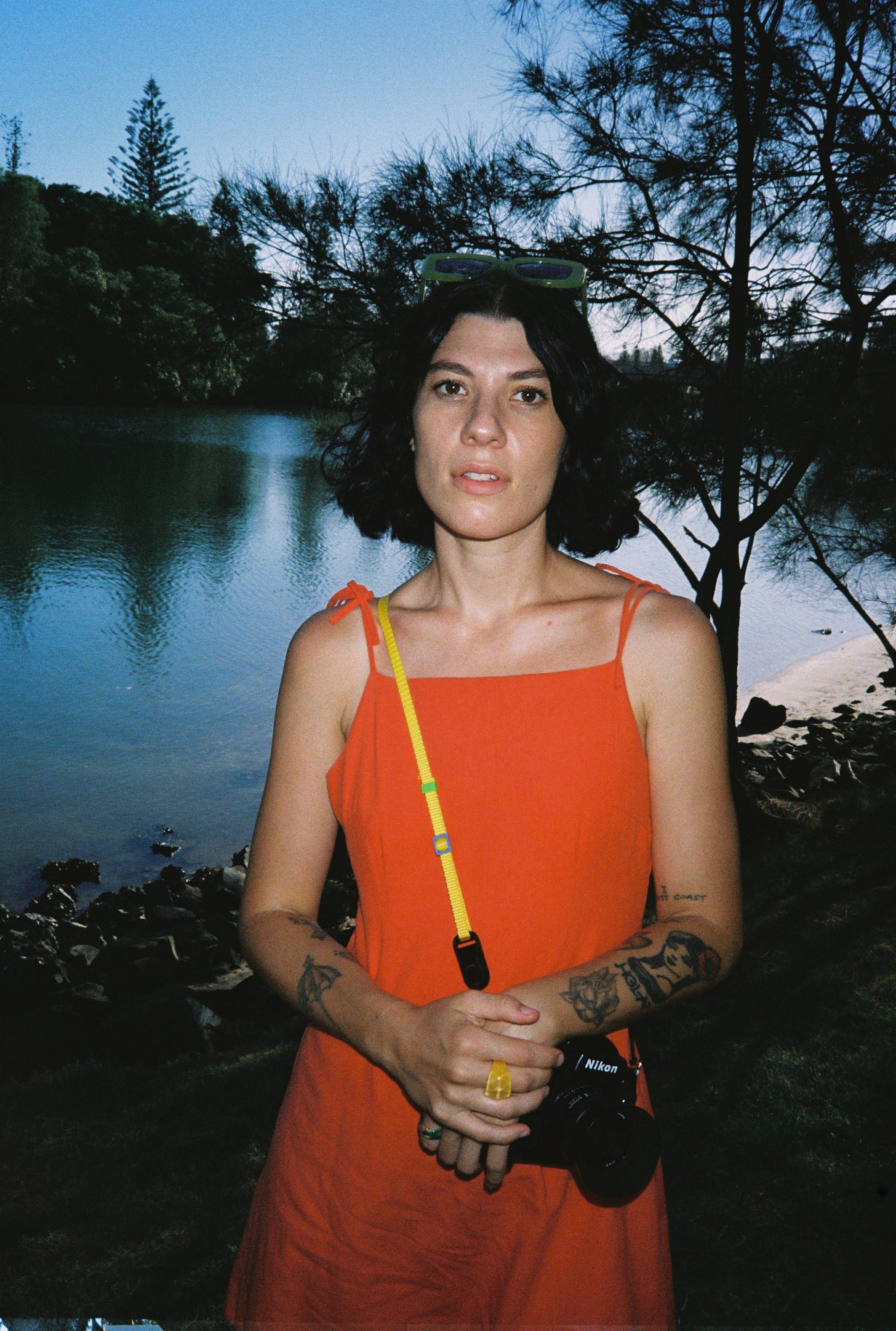This week we are talking about something that makes a lot of creative people shudder….
$MONEY$
I’m interested to know how even reading that word makes you feel?
I’m attempting to share what I’ve learned in the last few years providing a range of creative services in the hope to help you navigate the financial side of things.
Get ready for some real talk…
This is part 4 of my series helping budding or existing creatives break into the industry, land clients, reach their goals and have free access to honest advice from someone who has just gone through it all.
This series has been made possible by my friends at picdrop who are kindly sponsoring today’s newsletter. If you are delivering assets like photo and video content to clients then click below and try picdrop for FREE for 2 whole months and experience the difference for yourself!
I was honoured to be a guest on the Prime Lens podcast recently. You can catch the full interview below. Be sure to let the host know if you are listener and leave a rating and review to help spread the love!
Time is money and other quotes about coin
So I tried to find a perfect quote that summed up how I feel about money and the truth is that we all feel a bit differently about it depending on our past, our current situation and our personality.
Money is a tool yes, but money also comes with oversized bags of emotion because we all have a narrative when it comes to money.
Whether you’re like the kids in succession and you have too much of it, or you are just scraping by and money is scarce, it’s wise to understand that what is a lot to you is nothing to another and vise versa.
This is an important thing to note when pricing your services.
When someone asks me “how much should I charge?” it is like asking how long is a piece of string?
I can’t tell you.
The truth is that you’ll likely need to charge too little, or do too much and feel the compensation wasn’t enough to really understand your worth.
Money is a much discussed topic because it is so very layered. Today I’m going to run through some things to consider when taking on jobs, pricing them or learning from your previous engagements.
In the beginning money doesn’t matter…
When you first get paid to do something you love it feels like cheating.
I charged $200 for my first shoot 3 and half years ago and I felt like a million dollars.
I shot it on film so I basically made no money (haha) but I was so elated that a shop owner had asked me to take photos for them!
This is the most important job I ever took on because it gave me courage to move forward and book other work. What it provided far outweighed any value that money could offer and I urge you to seek out these opportunities for your creative services, especially in the beginning.
People often come to me about pricing when they are getting started and this is the only time you shouldn’t really be thinking about that at all.
It’s later on when you are busier, booking more, the stakes are higher, your expenses have grown and it’s all gotten a lot more serious that you need to also be serious about what and how you charge.
In the beginning it’s like you’re getting this bonus money for having fun and doing what you love. Please enjoy that.
Pricing plagues me so much that I sometimes take on work in exchange for product just to feel this beginner feeling again and have free reign with my creative choices and give myself a break from the dollar sign anxiety of breakdowns, usage, GST and total cost.
So in short: if you are new to doing any kind of paid work don’t sweat the price and focus more on what the job is offering your portfolio, but also your spirit. This job might lead to another and in the beginning it’s all about connections, proving your skills/vision and seeing what being paid to do something entails.
These are all more valuable than money itself and ironing out the kinks now while you’re a shiny, happy, beginner is prudent if you want to continue and go full time or make this a substantial part of your income.
Things to consider when pricing your services
As you get busier you will start to find it hard to balance all the moving parts of what you are doing.
It could be deadlines coming up, goal posts moving, creative direction changing, delays due to weather, product arrival or sickness or just literally anything. It’s a Murphy’s Law type situation where anything that can go wrong might, or will. You’ll get used to it though and it will build a lot of resilience and increase your ability to swiftly problem solve, both of which are valuable skills for a human being in the modern world.
This pressure point will naturally have you looking at your pricing and wanting to increase it or restructure your offer/deliverables.
We need to take on too much work and experience the perils of that before we make the change.
We need to do five revisions of the same video and spend weeks on something only to work out that what seemed like a great price for the job now actually works out to like 5 cents an hour. IYKYK.
Obviously try and avoid these but honestly you’ll learn way quicker if you just fuck up first.
Things to consider when presented with a job, commission, opportunity, or anything you enter into that requires your time and your beautiful creative mind:
Is what they are asking you to do CLEAR or is it VAGUE AF? Ask more questions about what they want and how it will play out etc. the more you know the easier you can price the job and justify the price too
Understand that even when you do the job it will likely take longer than you thought. Everything in life takes longer than we think it’s going to, trust me haha, so know this and factor that in or add on hours/cost for it in other areas of the pricing to accommodate.
HAVE SOME KIND OF CONTRACT OR TERMS AND CONDITIONS - This can be just a page of writing of things that you want to make clear and have the client know. These will act to protect you if they turn around and then change the scope and expect you to just go along with it. I’ve added a picture below of mine if that helps :)
Never project your own feelings about money or the perceived ideas of a client’s financial position on to what you will charge them. There are plenty of creative people to work with in all budgets so be careful not to lower or adjust for people constantly as you go along because you will find yourself doing a lot of work for not enough money and the only person that will suffer is you my friend.
Consider having some kind of minimum engagement rate for what you do: I have now made mine $1k because it’s not worth me having back and forth conversation, reading a brief, getting my bookkeeper to send a deposit etc. for any less than that once tax is taken out. Although I hate maths so very much, I urge you to do some, in order to work out your minimum engagement rate. This will help to cut out the odd jobs that aren’t really worth your time (in the beginning or in very slow/hard times these can be good) and just hold you back from booking something bigger, better and more lucrative.
Read the room: If everyone is saying yes and jumping at your package with no questions asked then it might be time to raise the rates. Some push back is good. On the flipside, if no one is hiring you then perhaps your idea of yourself and your skills is inflated or maybe you need to change your offering to meet more people where they are at in terms of what they will spend.
Don’t feel too grateful that people are hiring you or showing interest. I am guilty of this all the time and I think oh wow i’m so lucky they want to work with me and my partner reminds me that it is in fact the client that is lucky to be having my vision or face or name to their product, brand or business. It might sound arrogant but it’s not, it’s just recognising what value you bring to the table and why you’re worth it!
There are more and I could neurotically go on about all of them but these are good ones to get started thinking about. Let me know if you have more to add or if you have personal experiences to share.

Can you walk the walk?
Although I don’t believe in optics always dictating our worth (in fact that’s totally the opposite of how I think) I do believe that having your ducks in a neat little row will help you to up your prices.
It’s not just the creative work/result that matters it’s also the experience, the seamlessness of working with you, the promptness in your reply and delivery etc. that will both set you apart and also allow you to charge a little bit more than the average bear.
I’m going to list off a few things that you might want to audit if you are wanting to increase your prices or have a serious go at offering creative services as a side thing or a full time thing:
Is it clear what you do in your bio on socials and on your website or are you presenting as a ‘cat lover coffee addict who sometimes takes photos’ and then wonders why no one ever reaches out to you for work? Make it clear, make it concise and make it obvious you are here for hire.
How’s the website looking? Does it need a refresh? Can people navigate it easily and are you best positioned for what you want to be hired for? Look around at peers who are doing well and take notes.
Email/DM response time…are you being slack? I swear to god I spent so much time responding to every single person in the first few years. I ignored my family to get back to people and answer all their questions, walk them through the process or pitch an idea. Don’t ignore your family please, I’m only saying this to stress that you kind of have to be all in to get somewhere with your art/creativity in the beginning.
How are you systems around enquiries? Are you making it easy for the client and do they feel like this is a thought out process you’ve refined. Intake forms are great and so are emails that outline “next steps” for them so they know what’s coming and when.
Do you need to up-skill in an area? Flash is a common one for photographers but you might need to learn a new computer skill or work on your mindset etc.
Communication and delivery of results. You can lose a lot of time in the back and forth with creative work so make sure you have an effective way to get feedback from clients. Google drive and the like are okay to start with but honestly I would invest in something more premium. Picdrop is great because your client can choose the images/videos they prefer and even circle/mark up certain content and comment so you can see exactly what they are talking about and amend quickly. This also gives you that professional touch and these little things set you apart and allow you to charge more.
A real life example of pricing
I had a person ask me if $700 was a reasonable amount of money to be paid for 4-6 hours of shooting an event.
In some ways this is a lot for a beginner - it’s a lot more than I got for the first 6 months or more shooting paid gigs!
When you really break it down though it’s maybe not that much?
Engage the client and schedule it in
Get to the place and shoot the event (maybe it’s longer than expected)
Drive home, unpack gear etc.
Cull photos and then edit them (this always takes a lifetime)
Have anxiety about whether or not you suck and should quit when you see the final edits
Finalise the selection and upload to image delivery platform (picdrop if you know what’s best 😉 )
Send email to client with final images (they might want changes, re-edits etc.)
Invoicing and admin to finish it off
Obviously every job looks different and sometimes it’s easy peasy but most of the time it’s a process just the same as any job is and so it should be priced accordingly.
Just because you enjoy it doesn’t mean it should be cheaper. No one expects a plumber to change his prices based on how much they enjoy or dislike the job and everyone seems to understand and accept that those types of services, trades people, dentists, accountants etc. all charge what they charge, end of story.
The creative services shouldn’t be viewed differently and it’s important that if you are charging for your time and skill you also remember that.
I encouraged this example story person to go for it because it’s a paid gig that could lead to another one and as a starting point it’s wonderful because it will build their portfolio and they will likely learn a lot.
Just remember that you cannot sustain that type of price for too long if you want to thrive and not just survive.
I hope this has helped pull back the curtain a little and make you feel more empowered with what and how you charge.
Let me know if you have any further questions below and i’ll see you in next week’s newsletter. Thanks for reading. Love Lucy xx
In keeping with this totally cost free newsletter model I’m delighted and grateful to have partners like picdrop to support our growing community.
This week’s newsletter is in partnership with picdrop, a photo and video delivery service I’m now using with all my clients. It allows me to create highly professional photo galleries in seconds and let clients download, select and comment on their favourite images. I can simply send my clients a link to access the gallery, no login or setup needed on their end, so easy!
picdrop is used by over 180 000 professional photographers, so if you are looking for a simple and effective tool to level up your workflow and look professional, then click the button above. They are offering Love Lucy readers a free 2 month trial to experience the difference that is picdrop for image delivery.








This is one of the most important pieces you have written, and so so so much in here that I wish beginner me knew.
This is my favorite:
“Just because you enjoy it doesn’t mean it should be cheaper”
Lucy out here dropping that real good stuff… again.